Abstract
The burst of a starved bacterium infected with several øX174 bacteriophage was usually found to contain genetic traits of only one of the possible parents; less often, two phage multiplied in the same host cell. Unstarved cells, in contrast, supported the growth of at least four parental phage types. The unproductive phage seemed to be able to undergo the intracellular transition from parental single-stranded deoxyribonucleic acid to the double-stranded “replicative form” (RF). These results are taken to mean that some bacterial factor required for a step between RF synthesis and maturation of progeny is limited in starved cells.
Full text
PDF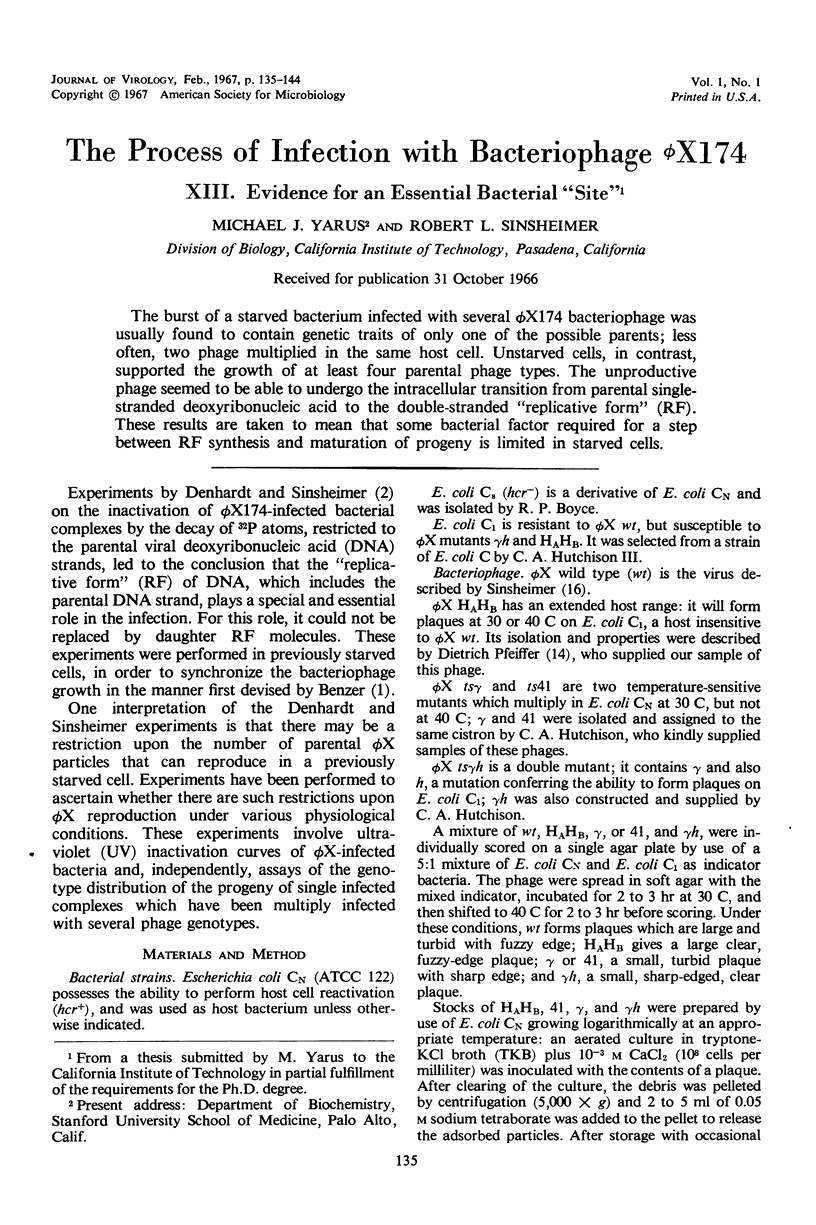
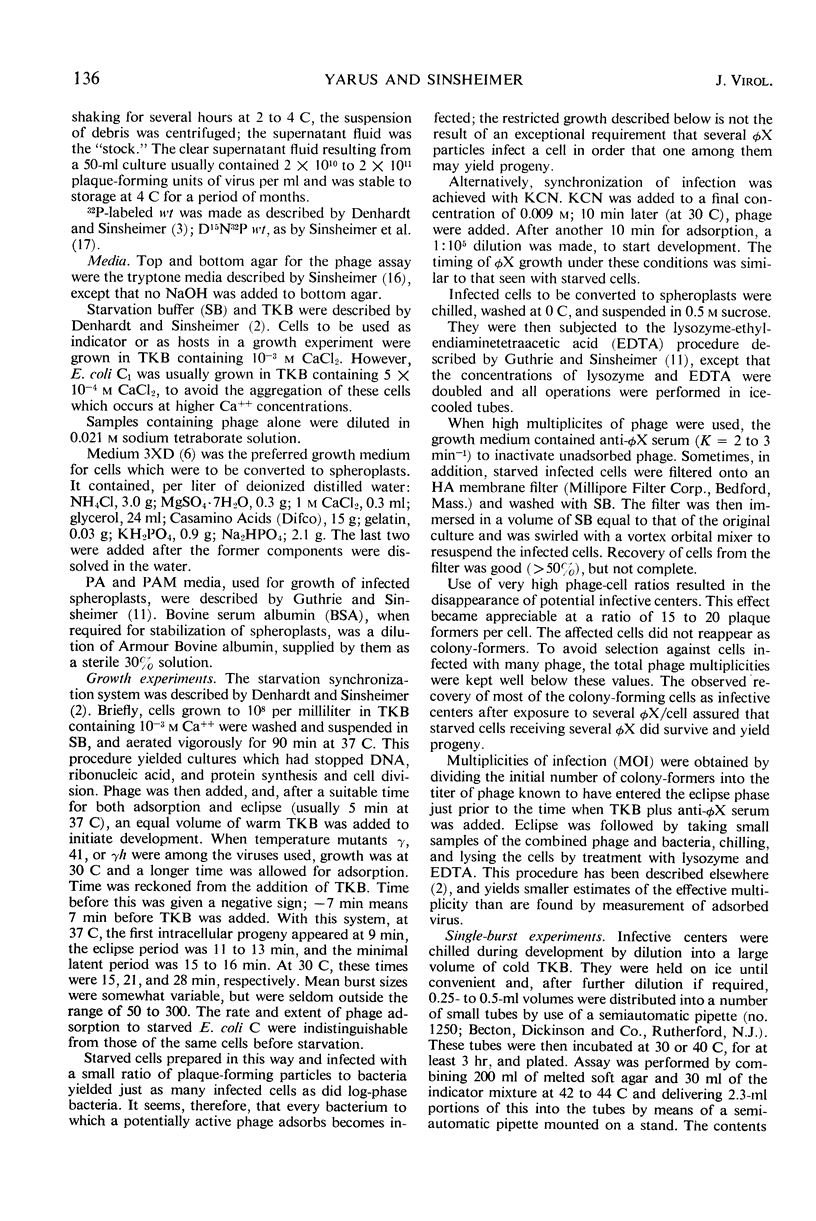
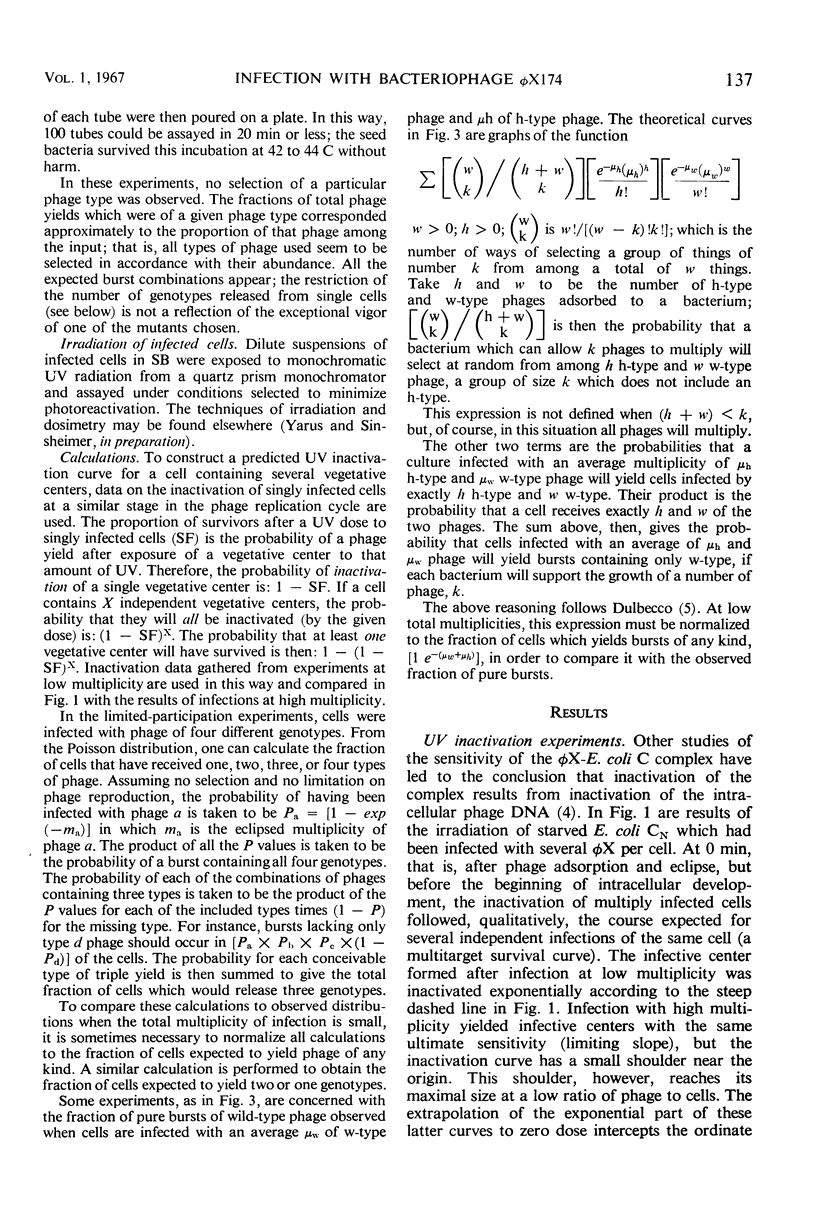
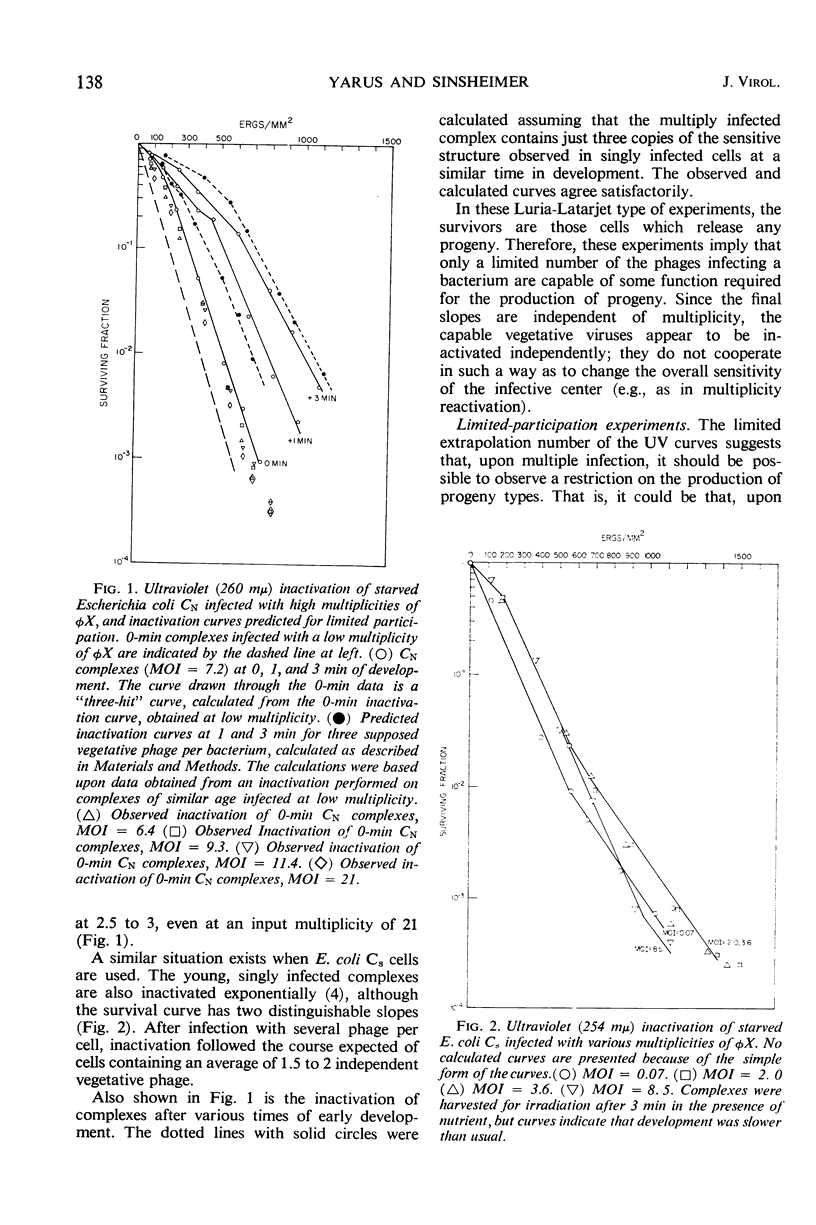
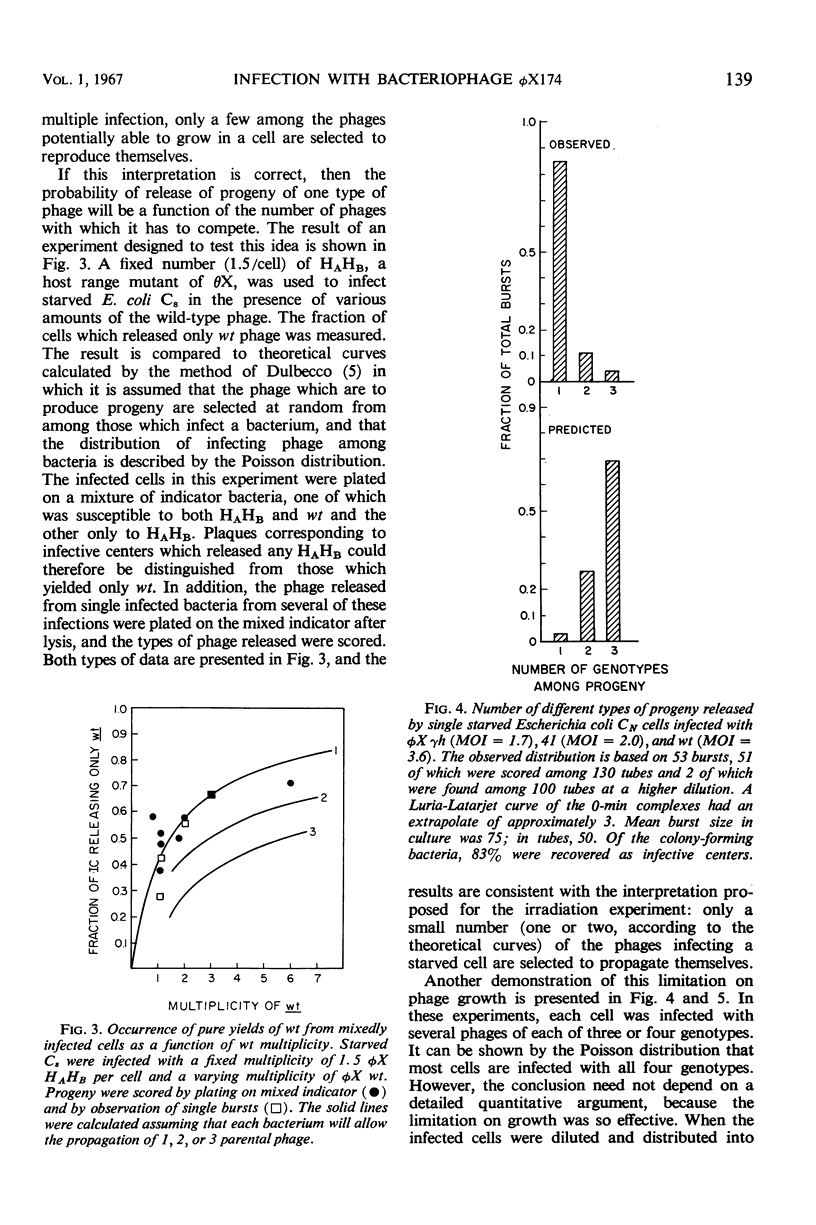
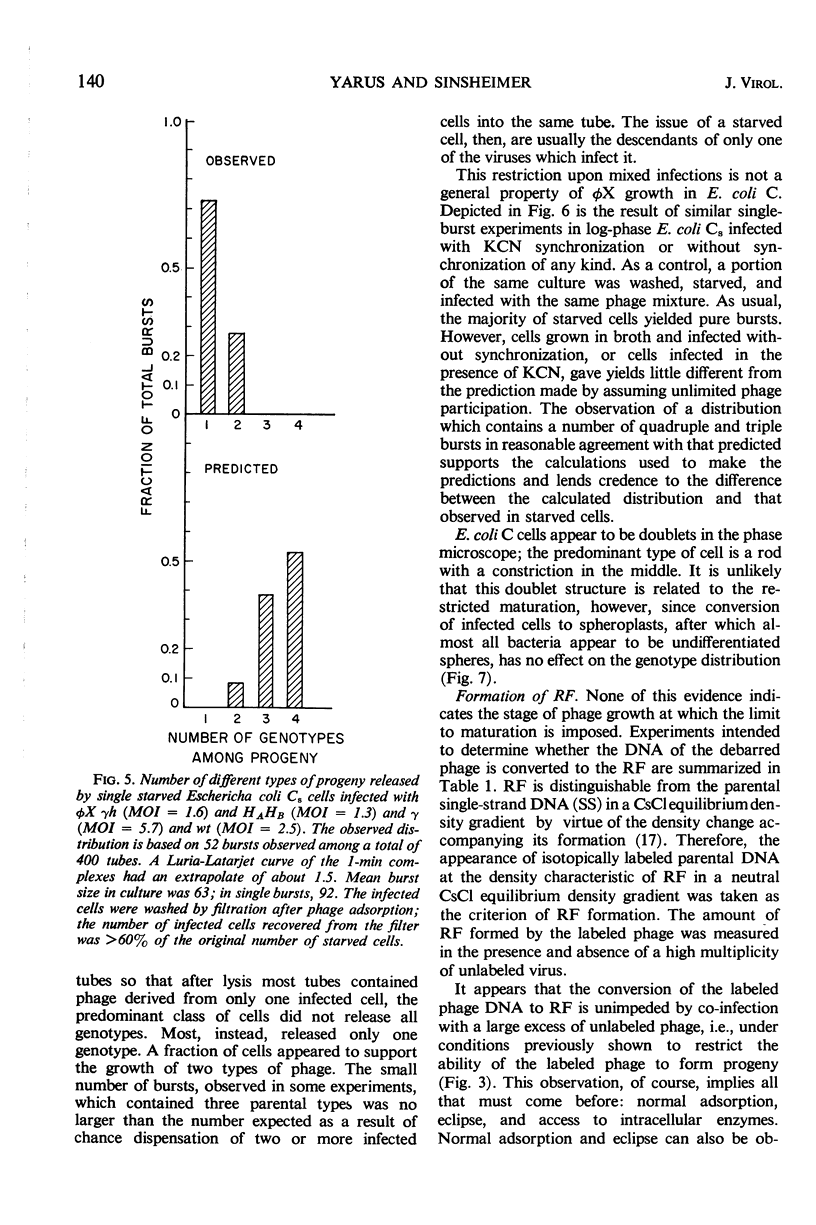
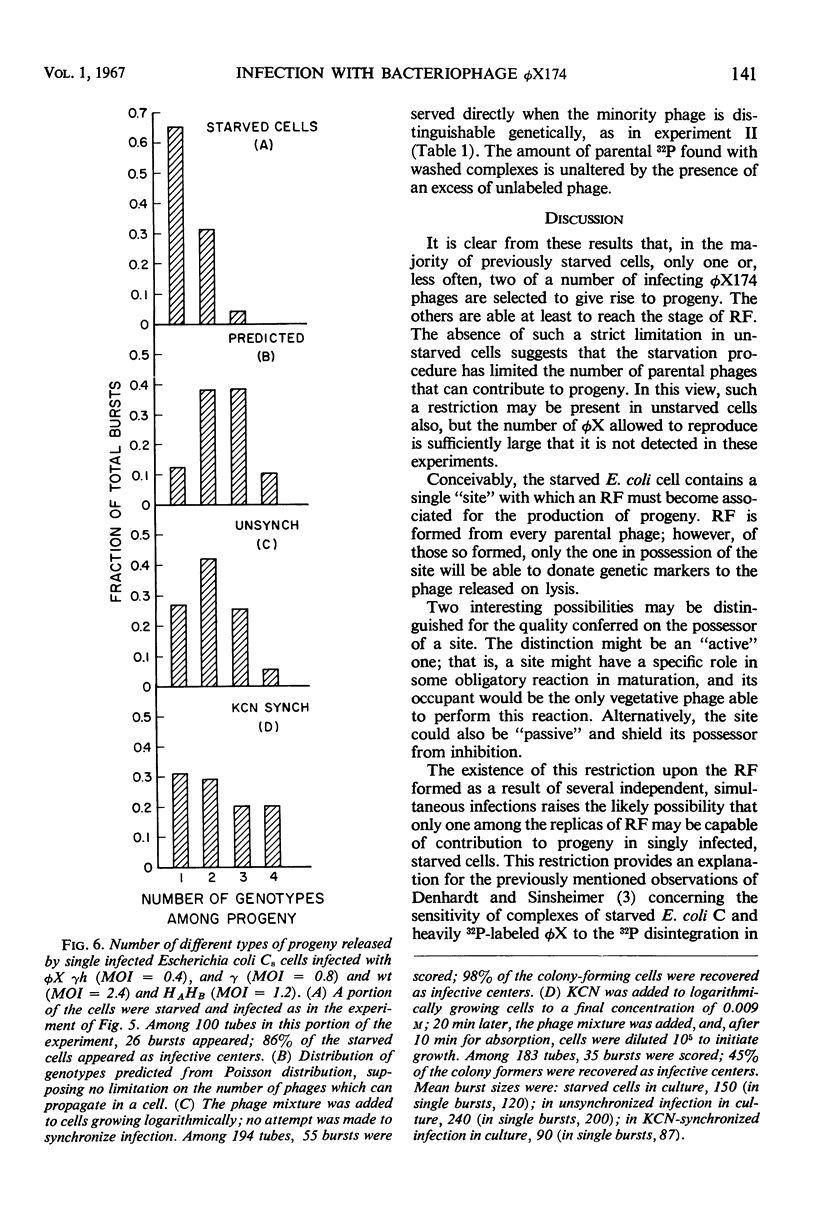
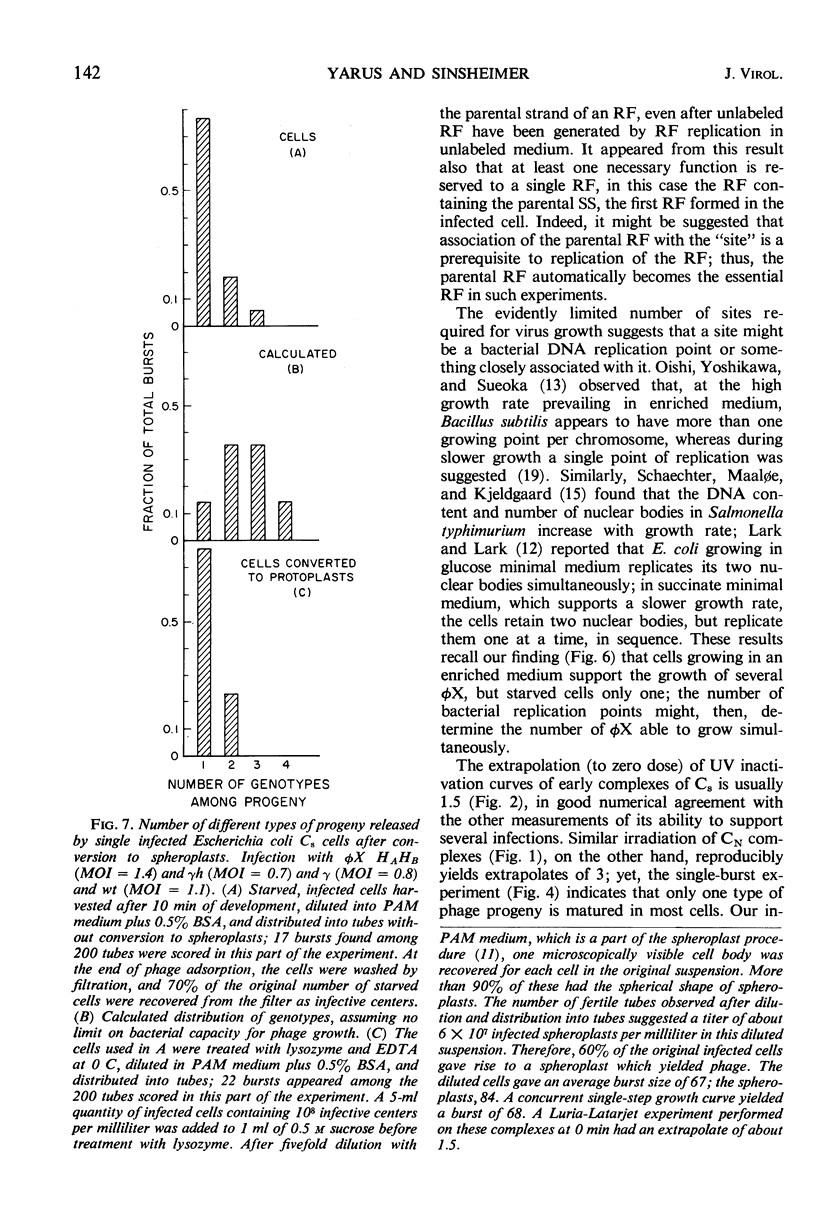
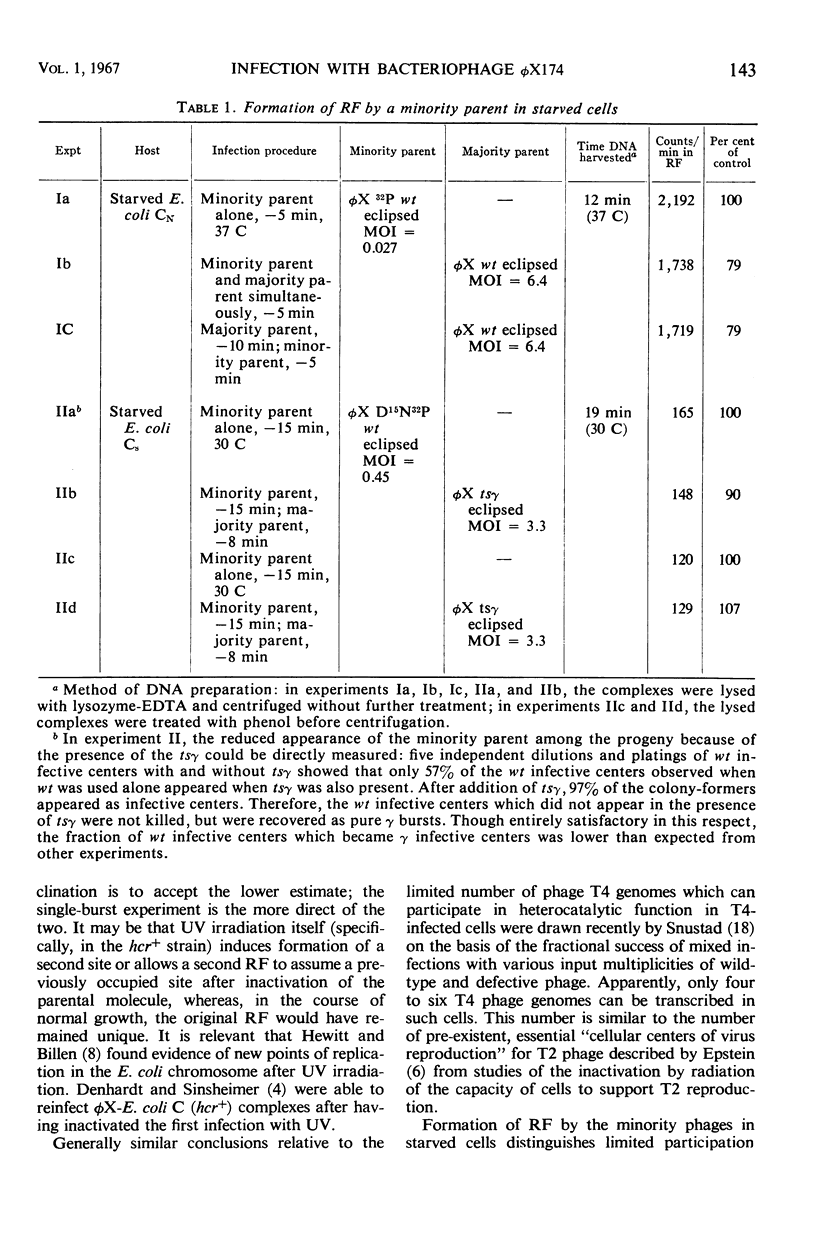
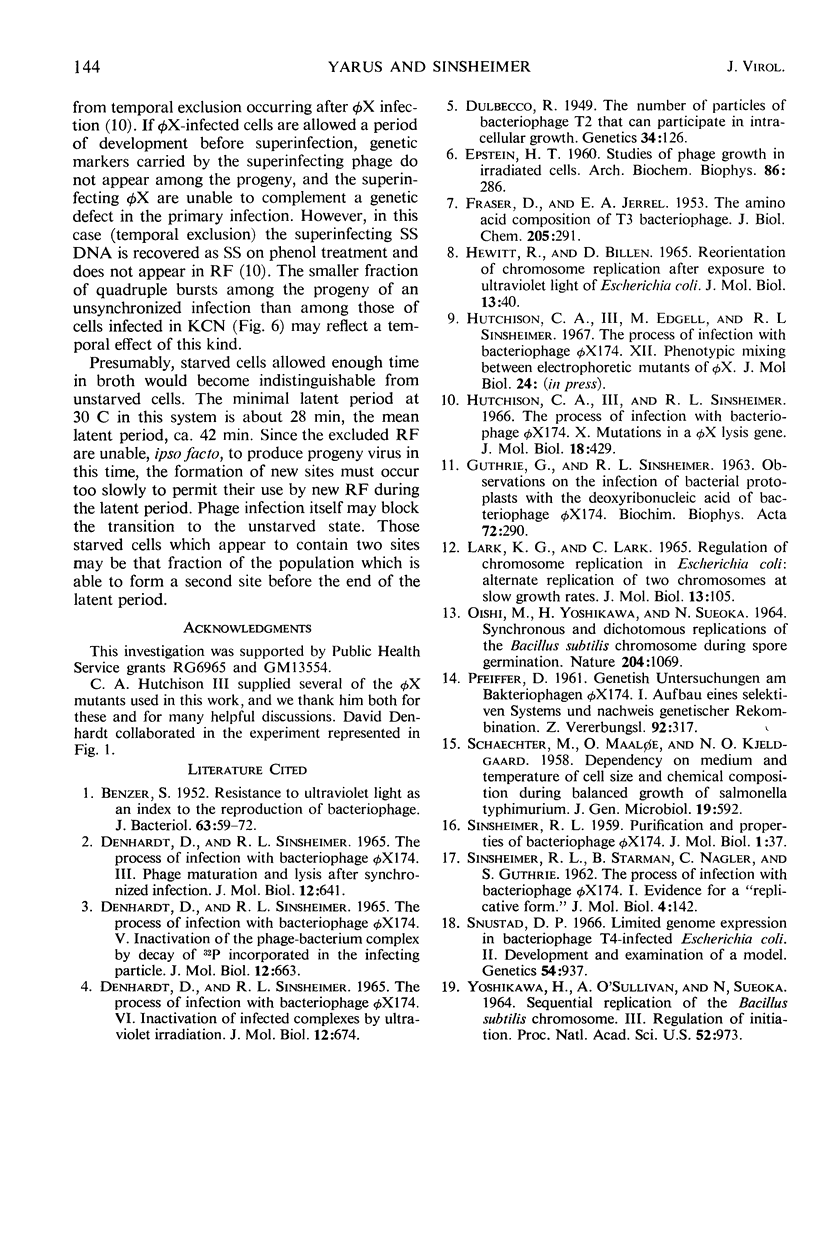
Selected References
These references are in PubMed. This may not be the complete list of references from this article.
- BENZER S. Resistance to ultraviolet light as an index to the reproduction of bacteriophage. J Bacteriol. 1952 Jan;63(1):59–72. doi: 10.1128/jb.63.1.59-72.1952. [DOI] [PMC free article] [PubMed] [Google Scholar]
- Denhardt D. T., Sinsheimer R. L. The process of infection with bacteriophage phi-X174. 3. Phage maturation and lysis after synchronized infection. J Mol Biol. 1965 Jul;12(3):641–646. doi: 10.1016/s0022-2836(65)80318-7. [DOI] [PubMed] [Google Scholar]
- Denhardt D. T., Sinsheimer R. L. The process of infection with bacteriophage phi-XD174. VI. Inactivation of infected complexes by ultraviolet irradiation. J Mol Biol. 1965 Jul;12(3):674–694. doi: 10.1016/s0022-2836(65)80321-7. [DOI] [PubMed] [Google Scholar]
- Dulbecco R. The Number of Particles of Bacteriophage T2 That Can Participate in Intracellular Growth. Genetics. 1949 Mar;34(2):126–132. doi: 10.1093/genetics/34.2.126. [DOI] [PMC free article] [PubMed] [Google Scholar]
- FRASER D., JERREL E. A. The amino acid composition of T3 bacteriophage. J Biol Chem. 1953 Nov;205(1):291–295. [PubMed] [Google Scholar]
- GUTHRIE G. D., SINSHEIMER R. L. Observations on the infection of bacterial protoplasts with the deoxyribonucleic acid of bacteriophage phi X174. Biochim Biophys Acta. 1963 Jun 25;72:290–297. [PubMed] [Google Scholar]
- Hewitt R., Billen D. Reorientation of chromosome replication after exposure to ultraviolet light of Escherichia coli. J Mol Biol. 1965 Aug;13(1):40–53. doi: 10.1016/s0022-2836(65)80078-x. [DOI] [PubMed] [Google Scholar]
- Hutchison C. A., 3rd, Sinsheimer R. L. The process of infection with bacteriophage phi-X174. X. Mutations in a phi-X Lysis gene. J Mol Biol. 1966 Jul;18(3):429–447. doi: 10.1016/s0022-2836(66)80035-9. [DOI] [PubMed] [Google Scholar]
- Lark K. G., Lark C. Regulation of chromosome replication in Escherichia coli: alternate replication of two chromosomes at slow growth rates. J Mol Biol. 1965 Aug;13(1):105–126. doi: 10.1016/s0022-2836(65)80083-3. [DOI] [PubMed] [Google Scholar]
- OISHI M., YOSHIKAWA H., SUEOKA N. SYNCHRONOUS AND DICHOTOMOUS REPLICATIONS OF THE BACILLUS SUBTILIS CHROMOSOME DURING SPORE GERMINATION. Nature. 1964 Dec 12;204:1069–1073. doi: 10.1038/2041069a0. [DOI] [PubMed] [Google Scholar]
- SINSHEIMER R. L., STARMAN B., NAGLER C., GUTHRIE S. The process of infection with bacteriophage phi-XI74. I. Evidence for a "replicative form". J Mol Biol. 1962 Mar;4:142–160. doi: 10.1016/s0022-2836(62)80047-3. [DOI] [PubMed] [Google Scholar]
- Snustad D. P. Limited genome expression in bacteriophage T4-infected Escherichia coli. II. Development and examination of a model. Genetics. 1966 Oct;54(4):937–954. doi: 10.1093/genetics/54.4.937. [DOI] [PMC free article] [PubMed] [Google Scholar]
- YOSHIKAWA H., O'SULLIVAN A., SUEOKA N. SEQUENTIAL REPLICATION OF THE BACILLUS SUBTILIS CHROMOSOME. 3. REGULATION OF INITIATION. Proc Natl Acad Sci U S A. 1964 Oct;52:973–980. doi: 10.1073/pnas.52.4.973. [DOI] [PMC free article] [PubMed] [Google Scholar]


